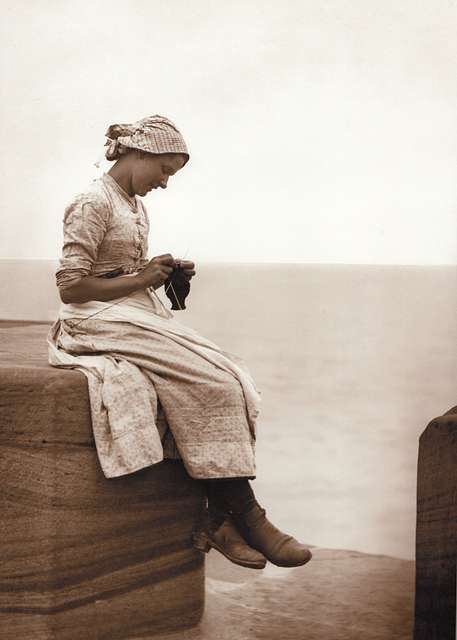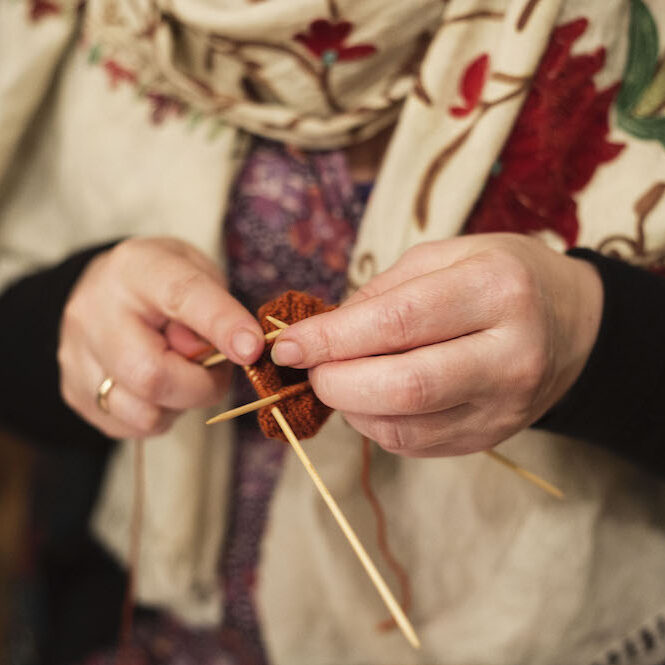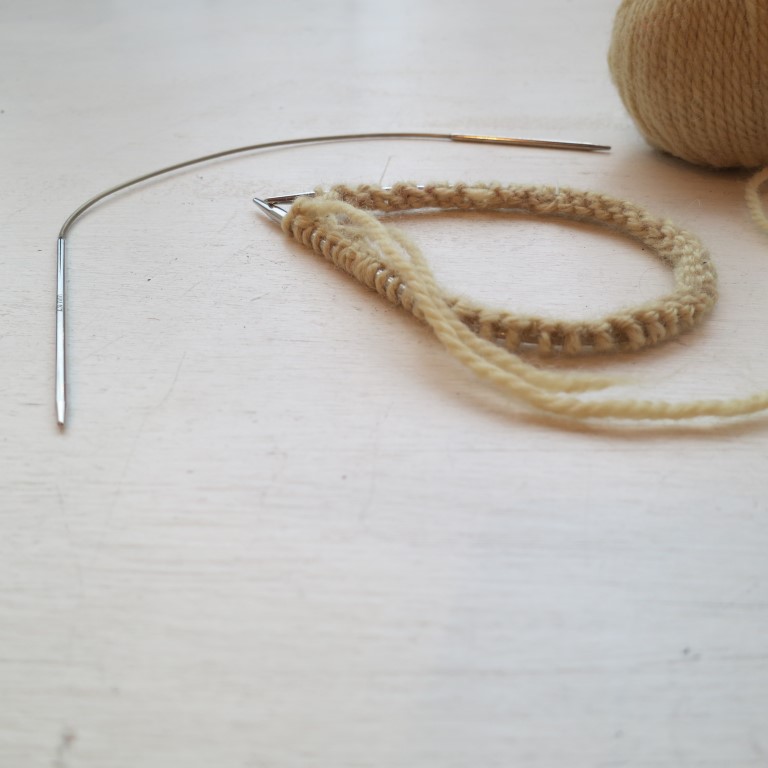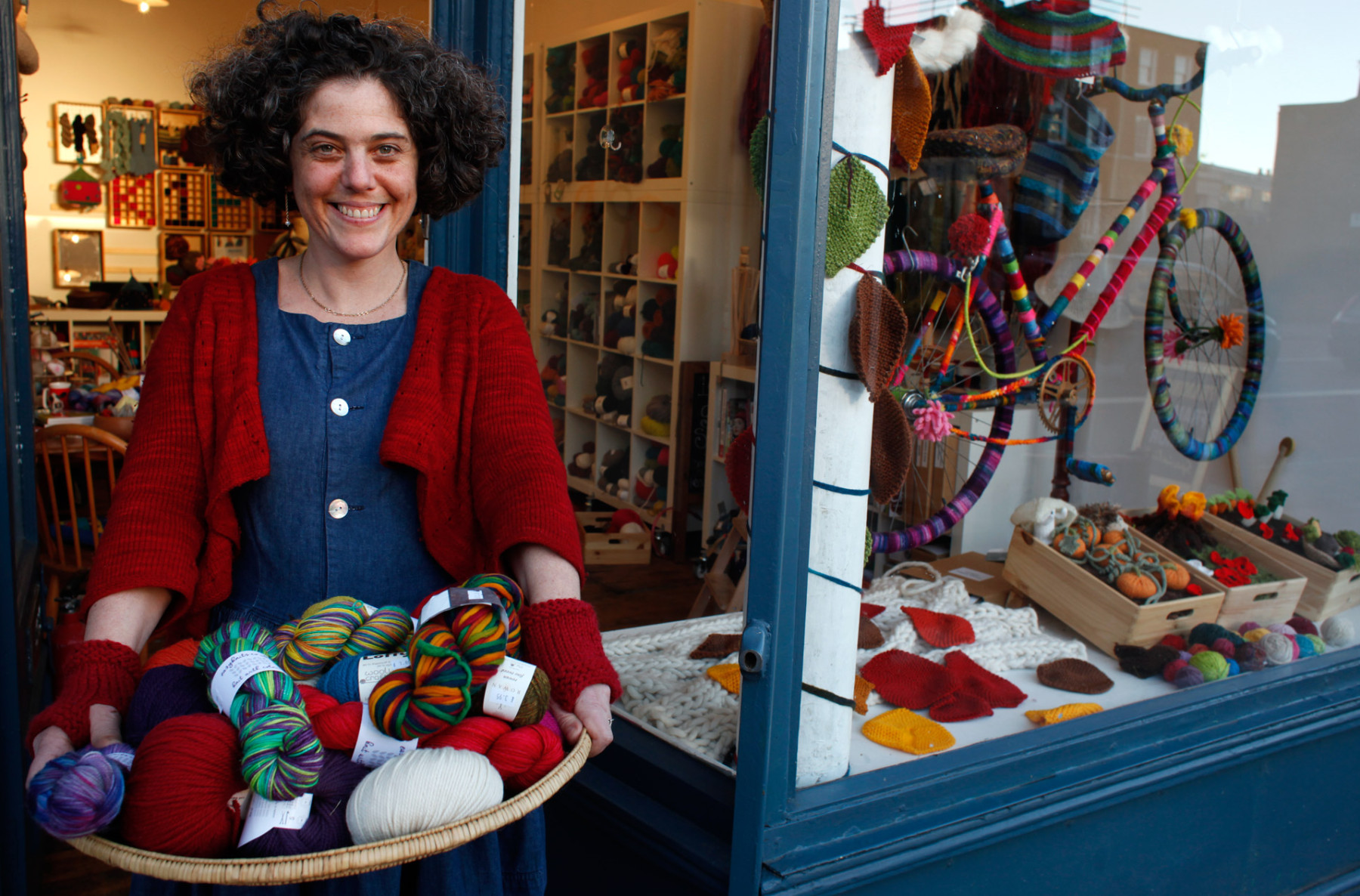‘It’s a just a hat – why do I need 2 different sorts of needles?’
‘Finally reached the sleeve decreases and now even my 40cm circular is too long. What’s the best way to get to the cuff?’
‘I want to make my first pair of socks – is it better to use DPNs or a long circular with the magic loop?’
There’s a version of this small-circumference-in-the-round question that Brontë and I get asked most days of the week, so you’d think that by now we’d have the right answer ready to set the curious knitter off in the right direction for their next stitches. The trouble is that even though we’ve got a combined knitting age of about 387 sweater years, there is no unequivocally correct way to answer the question. We have our preferred options and our own wiley ways of second guessing what we think will suit you best, but in the end it’s one of those classic knitty, no-right-answers questions. You need to get on board with the way that you prefer and the only way to work that out is to understand the different methods and have a go.
So how are we going to get to the bottom of the different methods? Well I think it needs a bit of quiet space without the background noise of Team Magic Loop’s cheerleaders, or pontificating from the Council for the Preservation of DPN Knitting. Luckily for all of us this newsletter is being written in a secret location on neutral territory where knitting needle impartiality reigns.
So here we go..
The Problem
Circular (seamless) knitting relies on your stitches stretching all the way around the circumference of your circular needle. Our standard lengths of needles are fine for bodies (80-100cm), yokes (60cm), upper arms (40cm), but used in a normal way, they won’t work for smaller circumferences like mittens, glove fingers, the tops of hats and bottoms of arms. Creating a needle which is short enough to work a tiny number of stitches in the round, whist being big enough to have tips that your hands can hold onto, is a foxy conundrum. Luckily the resourcefulness and creativity of knitters has furnished us with the following solutions..
In the beginning there were Double Pointed Needles (DPNs)
With DPNs we arrange stitches along a triangular formation of 3 straight needles that are pointed at both ends, and knit off with a 4th working needle. It allows for the tiniest of tiny circumferences, and was devised so long ago, no one really even knows when people began knitting that way. It was good enough for generations of fisherfolk to knit there seamless Guernseys back in the day, and even when everyone was knitting flat on long grey Aero needles in the last century, they still made their socks on DPNs. If heritage is high on your knitting agenda, or you have a hankering for looking like this lovely knitter in Whitby from about 100 years ago, they are definitely worth the effort.

So if they worked so well for all those people, why are there so many other options now?
Because they’re a bit of a faff. 4 needles with points at both ends means stitches can drop off the ends if you’re not careful, and more needles means more chances of losing one of them. You may also hear that there are more opportunities for creating a loose ladderish stitch at the join between the needles. I don’t hold much truck with that criticism, as it’s a separate problem for which there is a separate solution, less about DPNs, more about how you work the first two stitches on each needle.
But yes, 4 needles means that your hands are negotiating more knitting clutter than if your knitting was arranged on a single circular. That said, I managed to make peace with DPNs when I realised that regardless of the presence of 4 needles, I’m still only ever knitting with 2 of them – the other 2 are just there as stitch holders. Your concern as a knitter, is only ever with the two working tips.

Then came Magic Loop
Getting all your knitting on one needle has an obvious attraction, so it’s no surprise that the clever solution which arranges a small circumference of stitches around a part of a long circular needle by pulling the plastic cord into a loop between the stitches at their mid-point, now has an enormous following. You knit yourself halfway around your circle, then pull the cord around so that the next half of stitches are ready to knit and the just-knitted stitches are on the other side of the loop. Just like DPNs, you can get down to really tiny circumferences like socks, cuffs, fingers, and tops of hats. A couple of provisos are worth pointing out here: The eponynous ‘loop’ can only be maintained with a lengthy cable, meaning that Magic Loop knitting needs a circular needle with a minimum length of about 80cm, or more if you’re working sleeve tops or two socks. Having said that, once you make your peace with the Magic Loop, you are immediately liberated from having to buy different length circular needles as one long one is good for all circumferences #sweaterforless.
So what’s all the Magic Loop agro about – and why isn’t everyone doing it?
Because it’s a faff. Yes, I know that was the answer with DPNs as well. But this is a slightly different faff. All that pulling the cord around every half a round, and remembering which half completes the round – it’s just not quite as smooth as normal knitting in the round. Also when you put your knitting away and lose the place where the loop is, you have to put it back again later on and if your stitch count is growing on account of yoke increases, there is a point at which it may be difficult to maintain the loop, even though you haven’t yet got enough stitches to go around without it.
So is that it?
Well there are a couple of new options on the scene which are worth considering:
We have some intriguing bendy DPNs called Crasy Trios in the shop which are a sort of mash-up of DPNs and Magic Loop. Stitches are arranged in two sections Magic Loop-style, but on separate needles with points at both ends – so no loop to pull through at the end of each section. You work the round by knitting off with a 3rd needle, made possible by the needles being bendy. Curiously this seems to remove the stitch jeopardy of DPNs. My verdict is that there is considerable faff-reduction with Crasy Trios but they come with a price tag and the mutliple needles factor remains.
And finally Shorties or Sockwonders – tiny circumference circulars.

Now perhaps you’re wondering why it took us so long to get to what is the most obvious solution to the problem, right? Just shrink the circular needle down to the length we need. Well yes and no. To make circular needles that short, we need to drastically reduce the length of the rigid tips that you knit with – otherwise there’ll be no room for the bendy cable segment which is what makes the circular element possible at all. Shorties manage this by having the right working tip slightly longer than the left, but still only long enough to hold with your finger tips. This is a different knitting position and it’s an acquired taste which doesn’t suit all hands. If it works for you, you’re almost home and dry with a faff-free small circumference solution
except..
Why is there always an except!!??
..except that even though shorties are really very short (+/- 23cm) they are still too long for things like tops of hats, baby cuffs, thumbs, duck beaks, so they don’t solve all small circumference problems.
So there’s no faff-free solution?
The solution is (as always) in your hands. One knitter’s faff is another knitter’s exciting technique. By embracing the faff and getting the hang of it, you take the faffiness away and make it into a great solution. That’s why we’re always happy to give you a go on any of the methods described above. Whatever you try will take some time. Knitting as we all know, takes time. Give yourself a few rounds away from the knitters who already made their minds up, and you will find the way that suits you best.

